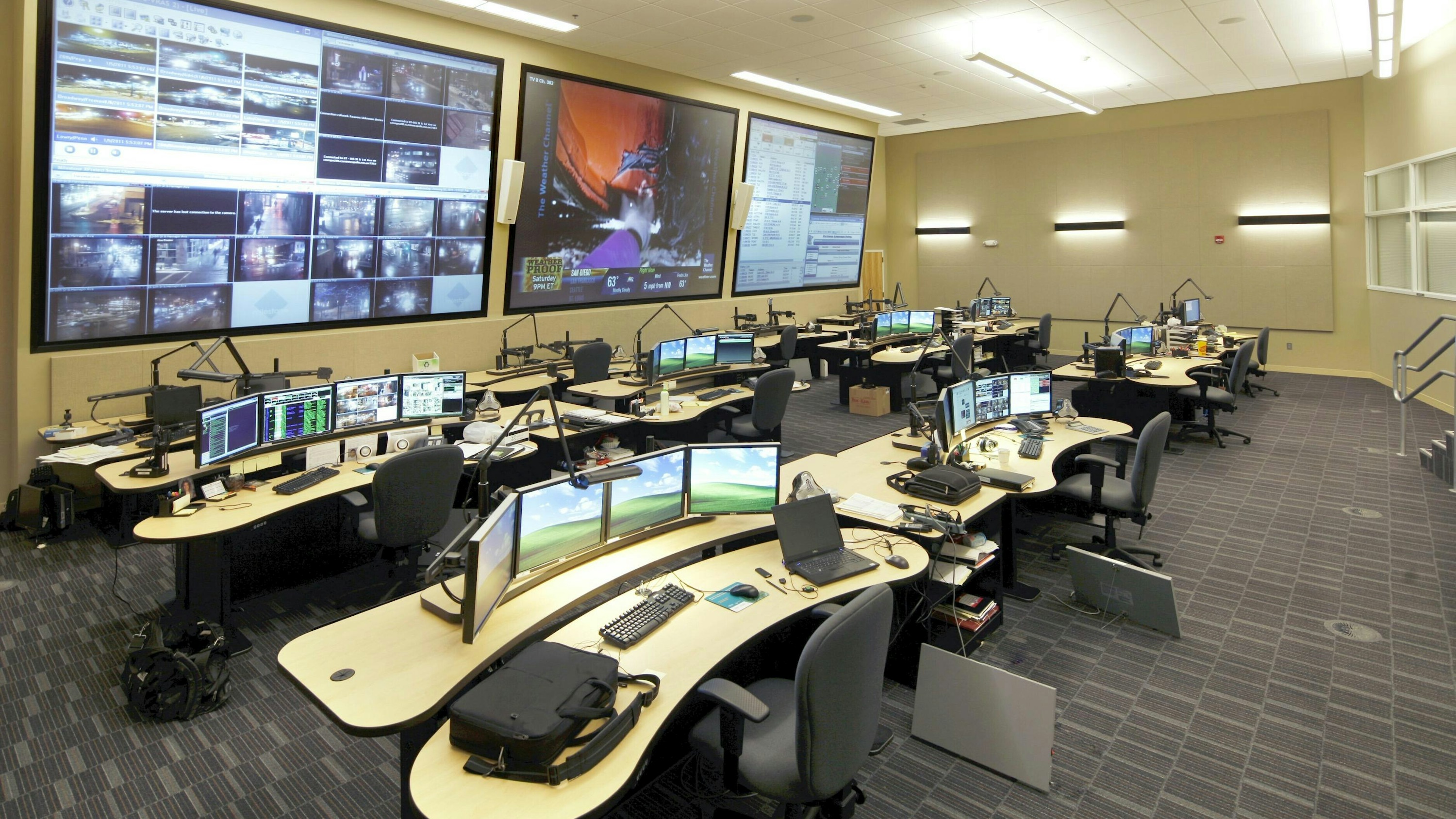
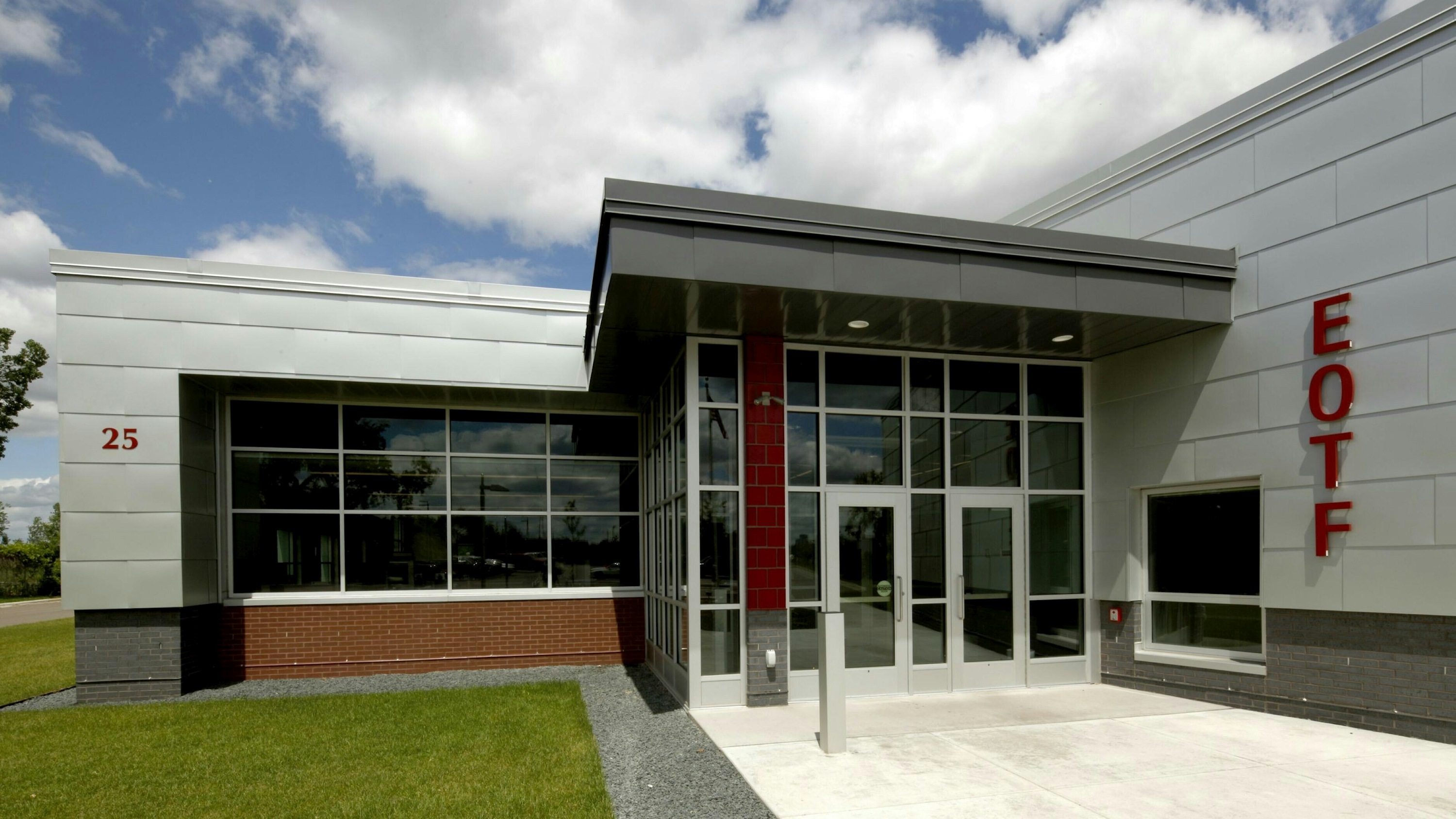
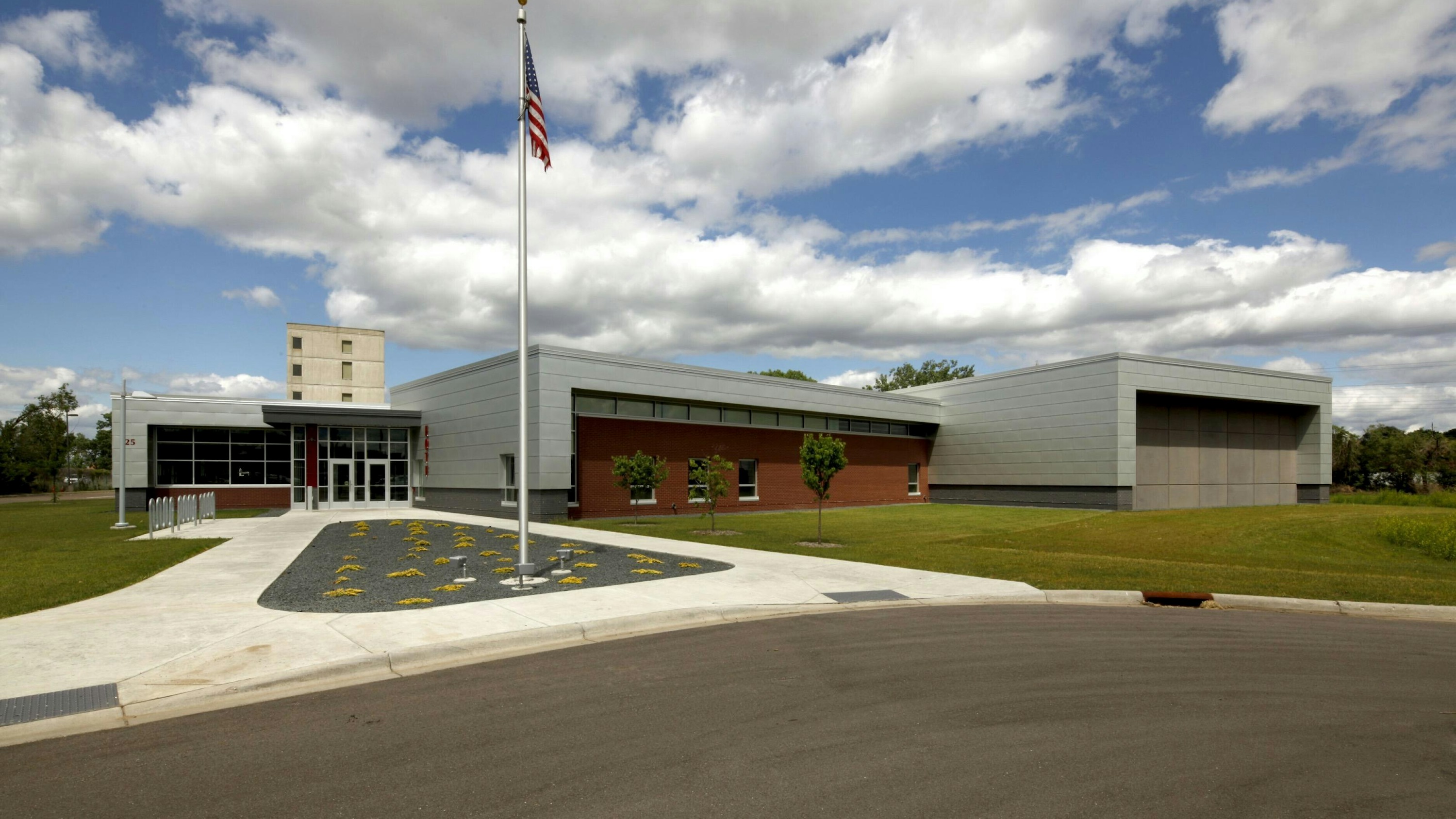
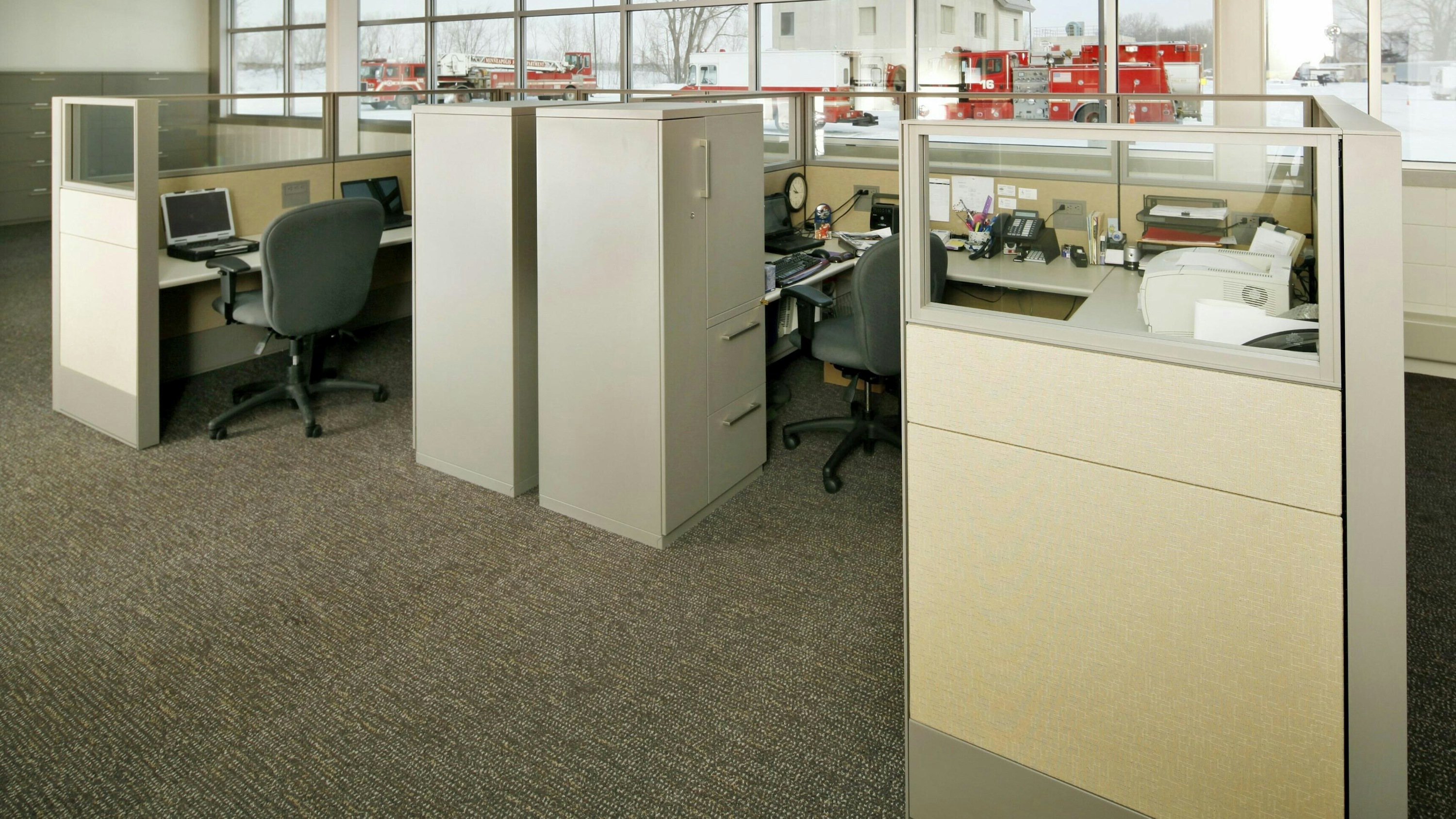

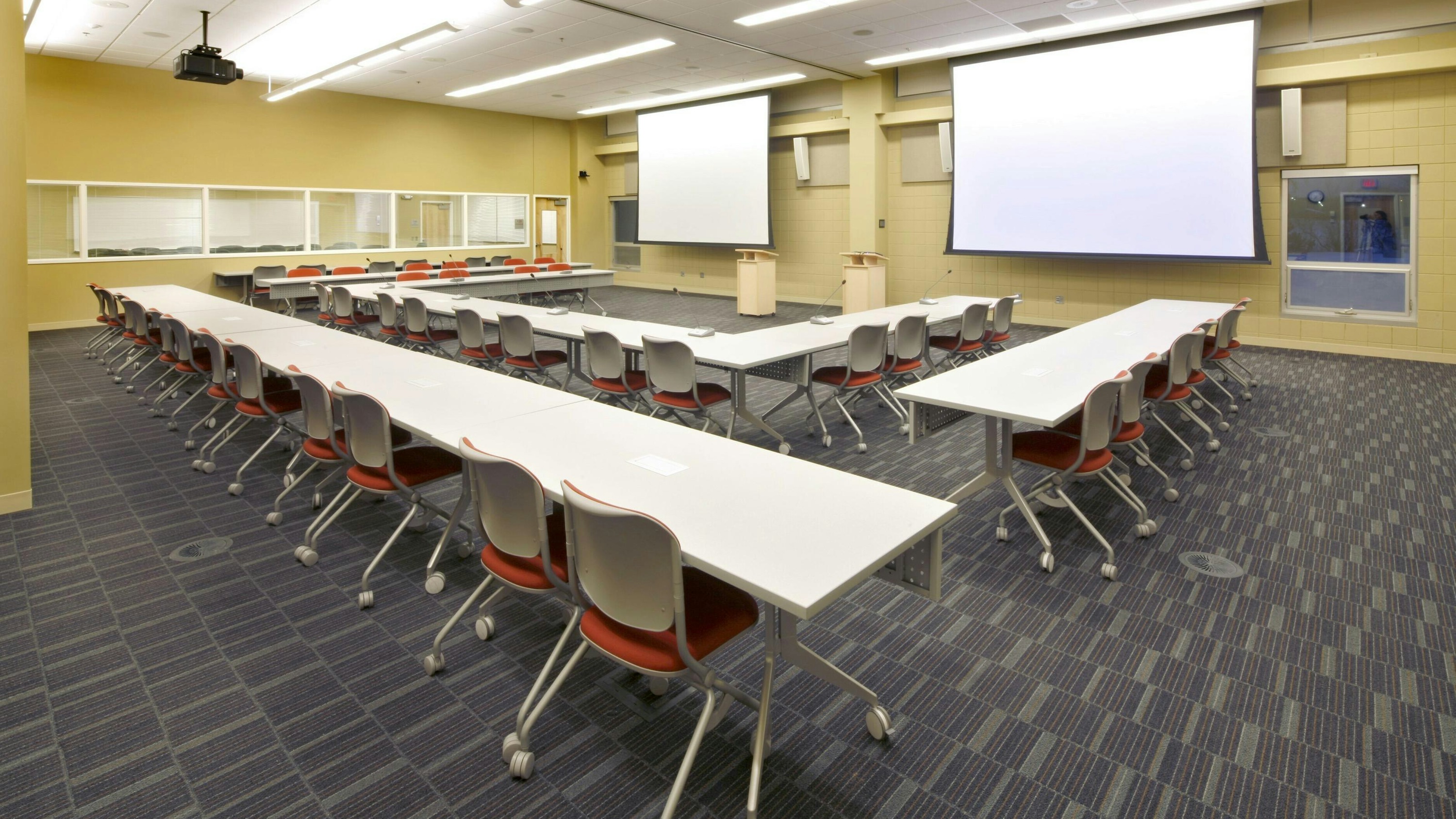
After the collapse of the I-35W Bridge in 2007, the City of Minneapolis felt an acute need for a modern training facility for emergency operations. Using the real-world lessons from the tragedy to inform the design, the new facility grew out of a master plan developed for the fire department training campus. The master plan outlined the construction of offices for the fire department’s training division and training classrooms to double as an interim emergency operations center (EOC). After allocating additional funding, the City added a strategic information (or “fusion”) center to the design to have an “always-on” source of information for the EOC. Shortly after construction on the initial project was completed, a planned addition was designed and constructed to house statewide asset vehicles that are used during a rescue at a collapsed structure.
Following the City of Minneapolis’s ordinance to design all facilities to a LEED Silver level of quality, Wold successfully integrated sustainability strategies to allow the initial construction to become LEED certified. Due to receiving State and Federal funding for the Apparatus Addition, the second phase of the project was designed to meet a LEED Silver level of quality and followed the Minnesota B3 Sustainable Guidelines for construction. Wold understands that many of the features touted as “sustainable” by these metrics are also important in decreasing a facility’s reliance on external inputs while extending its resiliency and continuity of operations.
Because the Minneapolis EOTF’s successful integration of programmatic elements led to an “always-on” status and easy access to critical information during an activation, the emergency response during and after the North Minneapolis tornado in 2011 was resoundingly successful, despite the tornado passing within a quarter-mile of the facility. Because of the facility's success and its “interim” EOC, a future “permanent” EOC has been deemed unnecessary, saving the City millions of dollars in future capital expenditures.